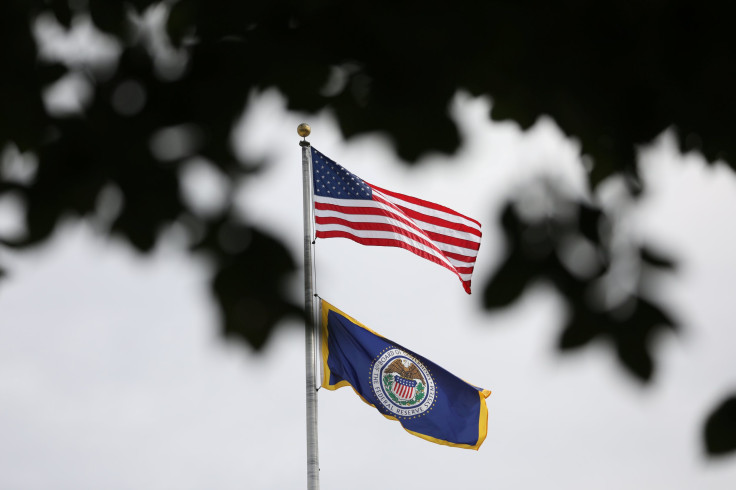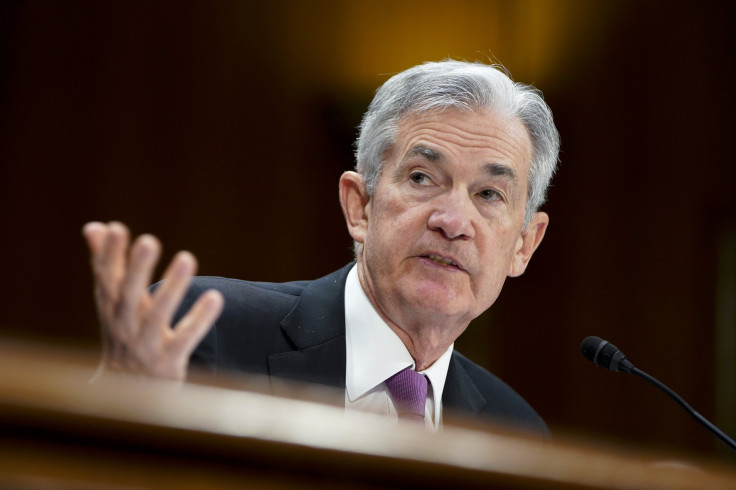Fed To Hold Line On Rates But Signal Readiness To Cut In June Meeting: IBT Poll

The Federal Reserve is widely expected to keep interest rates unchanged at the end of its two-day monetary policy meeting, a poll conducted by International Business Times showed.
But rising concerns on the trade war with China, worries about a yield curve inversion and slower growth momentum will nudge the central bank to signal readiness to cut rates if the economic data deteriorates.
All 29 economists polled by IBT expect the Fed to leave the key interest rates unchanged in the 2.25-2.50 percent range at its June 18-19 meeting.
Twelve of the 29 economists expect two rate cuts this year, 5 expect a single rate cut, and one saw three rate cuts. Ten economists expect the Fed to leave interest rates unchanged. Only one economist expects a rate hike this year.
Nearly two-thirds of the economists who took part in the poll expect the central bank to signal a shift from its “patient” stance and exhibit more willingness to cut interest rates, if needed.
Following an escalation in the trade war with China and weakness in the recent economic data, the Fed officials appeared to be laying the groundwork for a shift in their “patient” stance set in a meeting earlier this year.
Fed Chair Jerome Powell said June 4 that the central bank is “closely monitoring” trade disputes and its implications on the U.S. economy and "will act as appropriate to sustain the expansion" of the economy.
Powell’s comments came a day after the Federal Reserve Bank of St. Louis President James Bullard said a rate cut “may be warranted soon,” citing inflation data that is well below the Fed’s 2 percent target rate, and inflation expectations.
In a note, James Knightley, the chief international economist at ING, said: “Given the language shift from Fed officials, we believe that they will use the June FOMC (Federal Open Market Committee) to signal an easing bias. This would perhaps be through repeating Chair Jerome Powell’s use of the “closely monitoring” phrase and downward revisions to their economic projections and their “dot” diagram of rate expectations, which currently has a rate hike in for 2020.”
Yung-Yu Ma, chief investment strategist at BMO Wealth Management, echoed the thought. “The early 2019 Fed speak of a ‘patient’ stance toward rate increases has shifted to the Fed messaging of ‘appropriate action’ to sustain the expansion – i.e., cut rates if the economy slows,” he said. “Recent data including industrial production and durable goods have come in weak, and business spending will likely downshift due to the double-whammy of lower profit growth and economic uncertainty due to the trade war.”
Durable goods orders fell 2.1 percent in April, from a revised 1.7 percent growth in March. U.S. industrial production fell 0.4 percent in April, before reversing its trend in May and rising 0.4 percent.
Economists said that while growth has been healthy, weakness in the industrial sector, a moderate pick-up in wages, a mild inversion of the 2-10’s yield curve earlier this month, and trade issues are concerning to the Fed.
Mickey D. Levy, chief economist for the US, Americas and Asia at Berenberg, said in a note that with inflation below 2 percent, the “Fed sees the flexibility to stimulate,” and a weaker dollar following a rate cut will support the industrial sectors. He added that the Fed’s mantra to be patient will “reinforce its unhealthy relationship with financial markets and its awkward relationship with The White House.”

Trump has repeatedly criticized Powell for not heeding to his requests to ease monetary policy. In an interview with ABC News aired June 16, Trump said, “if we had a different person in the Federal Reserve that wouldn’t have raised interest rates so much, we would have been at least a point and a half higher (in terms of GDP, reported at 3.2 percent at the end of the first quarter).”
Some economists said despite the excessively pessimistic view that markets have about the trade outlook following an escalation in trade war, U.S. growth will still average about 1.6 percent in 2020.
Kathy Bostjancic, chief U.S. financial economist at Oxford Economics said “the latest increase in tariffs to 25 percent on half of U.S. imports from China will cost the U.S. economy about 0.3 percent of GDP by 2020 relative to a no-tariffs baseline. However, GDP growth is still expected to average 1.6 percent next year.”
While many argue that the markets will effectively “bully” the Fed into a series of rate cuts starting July, Bostjancic said “Fed Chair Powell holds the ultimate power at the ‘bully pulpit.’”
“We believe that the Fed will not want to pre-emptively ease policy before seeing the degree to which the U.S. economy is losing momentum, and rising protectionism is additionally dampening activity. This is especially the case with rates closer than usual to the effective lower bound, which leaves the Fed with fewer easing bullets,” she said. Bostjancic expects the Fed to cut rates once this year.
Others expect the central bank to act on a policy change only when it sees actual weakness in the economy and is sure rate cuts are needed.
“We don’t project any policy change this year, though the market is obviously discounting an easing path,” Mike Englund, chief economist at Action Economics, said. “We think the market has excessively extrapolated the negative market tone with the breakdown in the U.S.-China trade negotiations,” he said. “We expect the imposition of tariffs to have a more limited U.S. growth impact than the market fears.”
SOME SEE A RATE HIKE
William Dickens, chair of the Department of Economics at the Northeastern University has a contrarian view. He expects the central bank to raise interest rates once this year and once early next year, with a possibility again toward the end of next year. “I expect the economy to remain strong. I put the probability of a rate cut at 15 percent,” he said.
In a note, Ken Matheny, executive director, macroeconomic advisers, at IHS Markit, said the Fed’s patient approach will likely continue longer. And he expects the Fed to raise interest rates by a quarter point in mid-2020.
“Rising trade tensions, downward revisions to estimates of inflation in recent quarters, which is now running more substantially below the Fed’s 2 percent target, and a less favorable financial backdrop to the forecast tied to concerns over trade policy suggest that the Fed’s “patient approach” to policy is likely to continue for longer than previously anticipated,” Matheny wrote.
FED MAY NOT CHANGE BALANCE SHEET SIZE-- FOR NOW
Some economists expect the Fed to hold the size of the balance sheet constant until March 2020 by resuming purchases of Treasury securities that only offset maturing mortgage-backed securities (MBS).
“Once the equilibrium level is reached, the Fed will resume larger purchases of Treasury securities in line with the rise in other non-reserve liabilities such as currency in circulation. For now, we think that it would be premature for the Fed to increase its balance sheet before March 2020, but if it starts to aggressively cut rates, there is a risk that they will increase the balance sheet faster than we forecast,” Bostjancic said in the note.
Bank of America -- which sees a likelihood of a rate cut in September and December -- expects the FOMC to stop shrinking the balance sheet if the Fed cuts rates prior to the scheduled taper cessation at end-September. “The Fed and marketplace would likely see a policy of providing accommodation through rate cuts while tightening policy through balance sheet reduction as inherently contradictory and unsustainable,” it said.
© Copyright IBTimes 2024. All rights reserved.




















